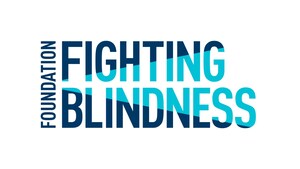Foundation Fighting Blindness Clinical Research Institute Hosted Workshop for ProgStar, the Largest Natural History Study for Stargardt Disease Ever Launched
The primary goal of the landmark study, funded by the Foundation, is to provide companies and researchers with disease-progression data and potential clinical trial endpoints to drive therapy development
COLUMBIA, Md., June 15, 2018 /PRNewswire/ -- More than 60 leading retinal disease clinical researchers from around the world gathered in Baltimore on June 11, 2018 to discuss findings from ProgStar, the Stargardt disease natural history study launched by the Foundation Fighting Blindness Clinical Research Institute (FFB-CRI) in 2013.
FFB-CRI invested more than $6 million in the international study. The prospective arm of the study followed 259 Stargardt disease patients for two years. The retrospective arm enrolled 251 patients, and the last patient visit was in 2017. To date, 11 study-related research papers have been published in peer-reviewed journals. Analyses of the data continue with additional publications in process.
"If you build it, they will come," said Janet Cheetham, PharmD, FFB-CRI's ProgStar project lead, underscoring the goal of boosting industry interest in therapy development. "If clinical trial endpoints for Stargardt disease are known, drug development will be more efficient." She noted that six clinical trials are currently underway for Stargardt disease.
"We are excited to disseminate our extensive knowledge of disease progression to academic and industry communities for this devastating form of inherited macular degeneration," said Hendrik P.N. Scholl, MD, MA, ProgStar study chair, and professor and chairman of the Department of Ophthalmology, University of Basel, director of the newly founded Institute of Molecular and Clinical Ophthalmology Basel (IOB) and adjunct professor of Ophthalmology at the Wilmer Eye Institute, Johns Hopkins University. "Therapy development for Stargardt disease presents many challenges. The condition is genetically heterogeneous and it varies in severity. Also, the rate of disease progression has not been well characterized, nor are there robust outcomes for evaluating disease progression in human studies. ProgStar is a major step forward in understanding disease progression and identifying outcome measures to effectively advance clinical trials for treatments."
Progression of vision loss in Stargardt disease is difficult to measure over time using standard clinical tools like an eye chart. The ProgStar workshop on June 11 considered three disease-measurement alternatives — optical coherence tomography (OCT), fundus autofluoresence, and microperimetry — for potentially measuring disease progression and treatment efficacy in clinical trials.
Stargardt disease leads to significant loss of central vision. It is often diagnosed in children and young adults. In most cases, the condition is caused by bi-allelic mutations in the gene ABCA4. Approximately 30,000 people in the U.S. have Stargardt disease with tens of thousands more affected in Europe and around the world.
The Foundation Fighting Blindness was established in 1971. It has since raised more than $725 million for research aimed at preventing, treating and curing blindness caused by retinal degenerative diseases. More than 10 million Americans, and millions more worldwide, have vision loss due to retinal degeneration. Through its support of focused and innovative science, the Foundation drives the research that has and will continue to provide treatments and cures for people affected by retinitis pigmentosa, macular degeneration, Usher syndrome and other inherited retinal diseases. FFB-CRI was established in 2004 to advance translational research and clinical development of emerging therapies for inherited retinal diseases.
Contact: Ben Shaberman
[email protected]
www.FightBlindness.org
Office: (410) 423-0634
Mobile: (410) 499-9158
SOURCE Foundation Fighting Blindness
Related Links
WANT YOUR COMPANY'S NEWS FEATURED ON PRNEWSWIRE.COM?
Newsrooms &
Influencers
Digital Media
Outlets
Journalists
Opted In






Share this article